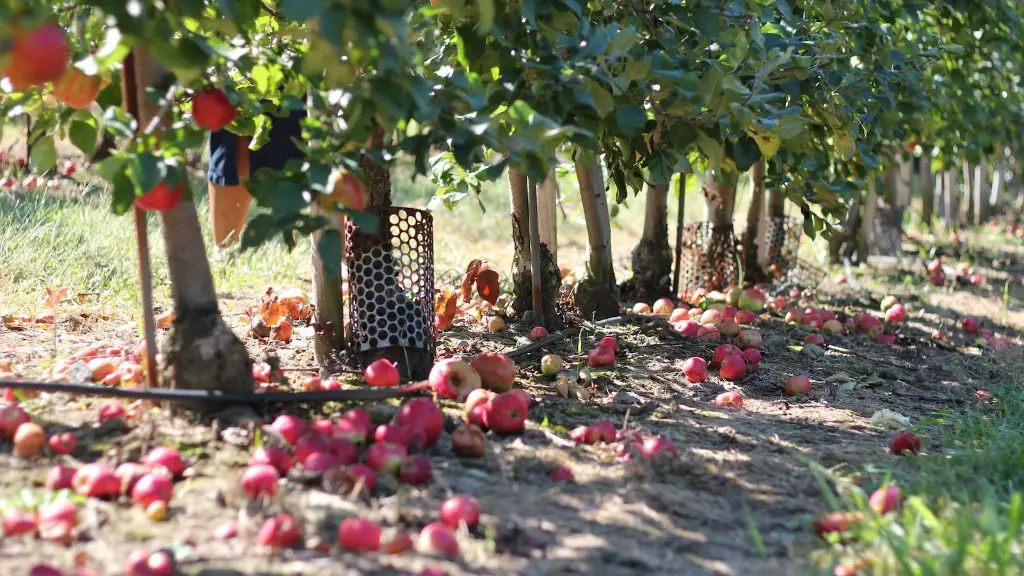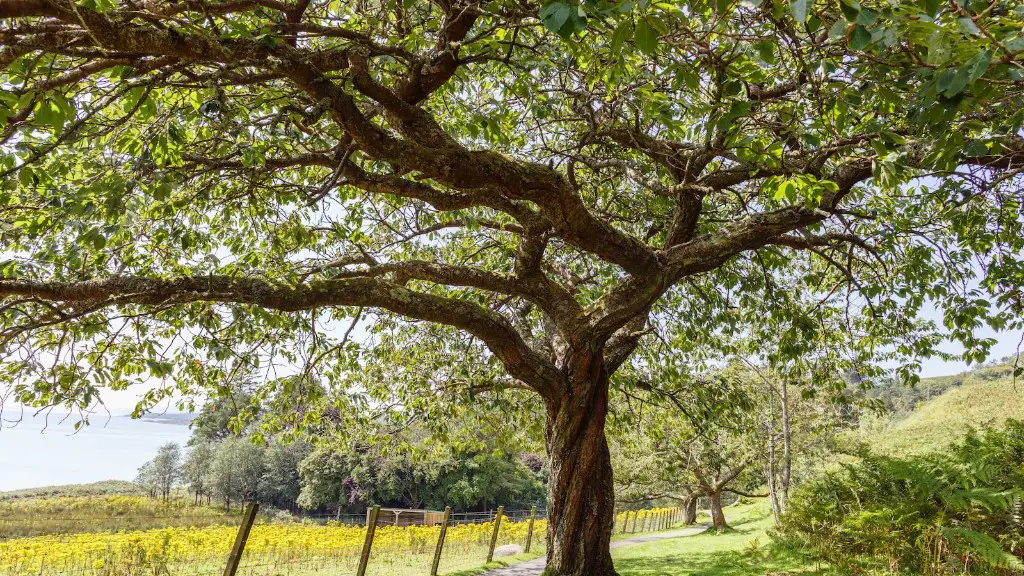Introduction
Palm trees are widely grown for various reasons such as for adding beauty to the landscape, for providing food, and for offering shade. There are a variety of palm species, including date palms and coconut palms, that are grown in many regions around the world. But sometimes palm trees can become a nuisance, blocking views or getting in the way of construction projects. In cases like this, it is necessary to remove them, and one way to do this is with chemical treatments. This article will explain how to kill palm trees with chemicals, including the specifics of the process, what chemicals to use, and the advantages and disadvantages associated with it.
What Chemicals To Use
The chemicals used to kill palm trees should be chosen carefully, depending on the type of palm being treated and the desired results. Generally, the herbicide glyphosate is the preferred chemical for killing palm trees, as it is safe for use in the environment and does not cause lingering problems with other plants or animals. In areas with higher populations of invasive species of palms, other chemicals may be needed, such as triclopyr or dicamba. There are also a variety of non-selective weed killers, such as pelargonic acid, that can be used to kill palm trees as well.
Process of Killing a Palm Tree with Chemicals
Before chemically killing a palm tree, it is important to consider the size of the tree and the amount of foliage it has. If the palm tree is smaller in size, with a limited amount of foliage, it may be possible to kill the tree with a single application of chemicals. For larger trees, it may be necessary to make multiple applications over a period of time.
Once the chemicals have been chosen, the next step is to prepare the area and the tree itself for treatment. For best results, the ground and roots of the tree should be cleared of debris and weeds, and the chemicals should only be applied to healthy leaves and branches.
The chemicals should then be carefully applied to the surface of the tree, following the manufacturer’s instructions closely, with extra care taken not to damage other plants nearby. Within a few days, the chemicals should start to take effect, and the leaves of the tree will begin to die off.
The process of killing a palm tree with chemicals can take some time, but it is very effective. As the leaves and branches continue to die off, the tree will become increasingly weak, eventually collapsing under its own weight. The roots should also die off, preventing the tree from re-sprouting.
Advantages and Disadvantages of Killing a Palm Tree with Chemicals
Killing a palm tree with chemicals has a number of advantages. It is relatively quick, taking only a few days for the chemicals to take effect, and it is also relatively easy, requiring only a few steps. Another advantage is that the tree will not grow back, as the roots of the tree will be killed off in the process.
However, there are also some disadvantages associated with the chemical approach. It can be dangerous to the environment if not used correctly, and it can also be costly, depending on the type and amount of chemicals used. Additionally, if the chemicals are sprayed in areas with other plants they may be damaged, as the chemicals are non-selective and will kill most types of vegetation.
Effects on the Environment
Although some herbicides are designed to be environment-friendly and have minimal impact, the use of chemicals to kill palm trees can still have a significant effect on the environment. In some cases, the runoff from the chemicals can contaminate water supplies, and if the chemicals are not used correctly they can cause damage to other plants and animals in the area.
To prevent environmental damage, it is important to only use certified herbicides, and to apply the chemicals in the correct manner as specified by the manufacturer. By following these instructions, it is possible to kill palm trees without causing harm to the environment.
Alternatives to Killing a Palm Tree with Chemicals
Killing a palm tree with chemicals is not the only option available when it comes to getting rid of unwanted palms. Other options, such as mechanical removal and transplanting, are often preferable for environmental reasons, as they do not involve the use of chemicals.
Mechanical removal involves using shovels, saws, and other tools to physically remove the tree, while transplanting involves moving the tree to a different location where it can be nurtured and allowed to grow. Both of these processes require more time and effort than chemical treatments, but they are better for the environment, and they also have the added benefit of allowing the tree to be moved to a more desirable spot.
When To Seek Professional Help
Although killing a palm tree with chemicals is relatively easy to do, it is still a good idea to seek the help of a professional if the task is too large or too dangerous for a single person to handle. Professionals will have the necessary skills and experience to safely and quickly remove the tree, and they will also be familiar with the safest and most effective chemical treatments for the job.
Additionally, professionals will also be able to provide advice on other options such as mechanical removal or transplanting, and they will often be able to provide follow-up services such as the removal of roots and other debris that may be left behind. Professional help is also beneficial for trees that are larger or more difficult to remove, as they will be able to use heavy-duty equipment that is otherwise unavailable to the average person.
Cost Implications of Killing a Palm Tree with Chemicals
The cost of killing a palm tree with chemicals varies depending on the type and size of the tree, the type and amount of chemicals used, and the labor involved. Generally, buying the necessary chemicals and applying them DIY is much more cost effective than calling a professional to do the job, but in some cases a professional may be needed.
For larger trees, the cost of the chemicals and the labor involved can add up quickly, so it is important to take this into account when deciding how to remove the tree. In any case, it is important to consider the cost of the chemical treatments and any other options available, such as mechanical removal or transplanting, before making a decision.
Replanting After Killing a Palm Tree with Chemicals
Once the palm tree has been killed with chemicals, the next step is to remove any remaining debris and replant the area. This can be done by filling in any holes left behind by the roots and planting a new tree or other vegetation, depending on the desired outcome.
When replanting after killing a palm tree with chemicals, it is important to use only certified chemical-free soil, as the chemicals may still be present in the soil and could damage the new plants. The new plants should also be kept away from the killed tree as much as possible as the chemicals can linger in the area and cause damage to other vegetation.
Safety Considerations for Killing a Palm Tree with Chemicals
When killing a palm tree with chemicals, it is important to take safety seriously. All of the necessary safety equipment should be worn at all times, including eye protection, long-sleeved clothing, and gloves. It is also important to read and follow the manufacturer’s instructions carefully, as many chemical treatments can be highly toxic if not used correctly.
Additionally, the area should be inspected carefully for any potential hazards such as power lines, buildings, or other plants, as the chemicals can spread easily and cause damage if not applied with caution. Finally, it is also important to keep children and pets away from the area while the chemicals are being applied, as they can be just as harmful to people as they are to plants.


